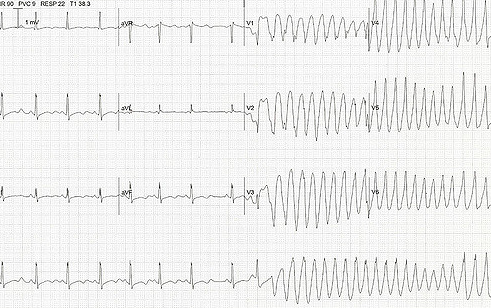
This post is for the psychiatry resident who asked me about a patient who had a Bazett’s QTc in the 510’s, but a Hodges QTc of 470:
Generally, we are concerned about QTc because torsades=bad.Practically speaking, a QTc >500 is something to be worried about.
A really shocking number of medications prolong the QTc, and just as a reminder, include things like antiarrhythmics, ondansetron, and haloperidol, but also Benadryl, erythromycin, tacrolimus, and TCAs.
What are the different formulas for QTc?
- Bazett’s formula: QTC = QT / √ RR
- Fredericia’s formula: QTC = QT / RR 1/3
- Framingham formula: QTC = QT + 0.154 (1 – RR)
- Hodges formula: QTC = QT + 1.75 (heart rate – 60)
Based on my expert Internet search, it is unclear which is the “best.” I also asked a couple of our attending cardiologists and cards enthusiasts, who didn’t have strong opinions.
The current clinical standard is the most widely used Bazett formula, but with this formula, there is a known overcorrection at high heart rates and undercorrection at lower heart rates. The Fridericia and Framingham correction formulae showed the best rate correction and significantly improved prediction of 30‐day and 1‐year mortality. With current clinical standards, Bazett overestimated the number of patients with potential dangerous QTc prolongation, which could lead to unnecessary safety measurements as withholding the patient of first‐choice medication.
That all being said: use the QTc that will give your patient the safest plan. And if you remain skeptical of a prolonged QTc in a clinically stable patient, get repeat EKGs until it’s…less prolonged…and your problem is solved.